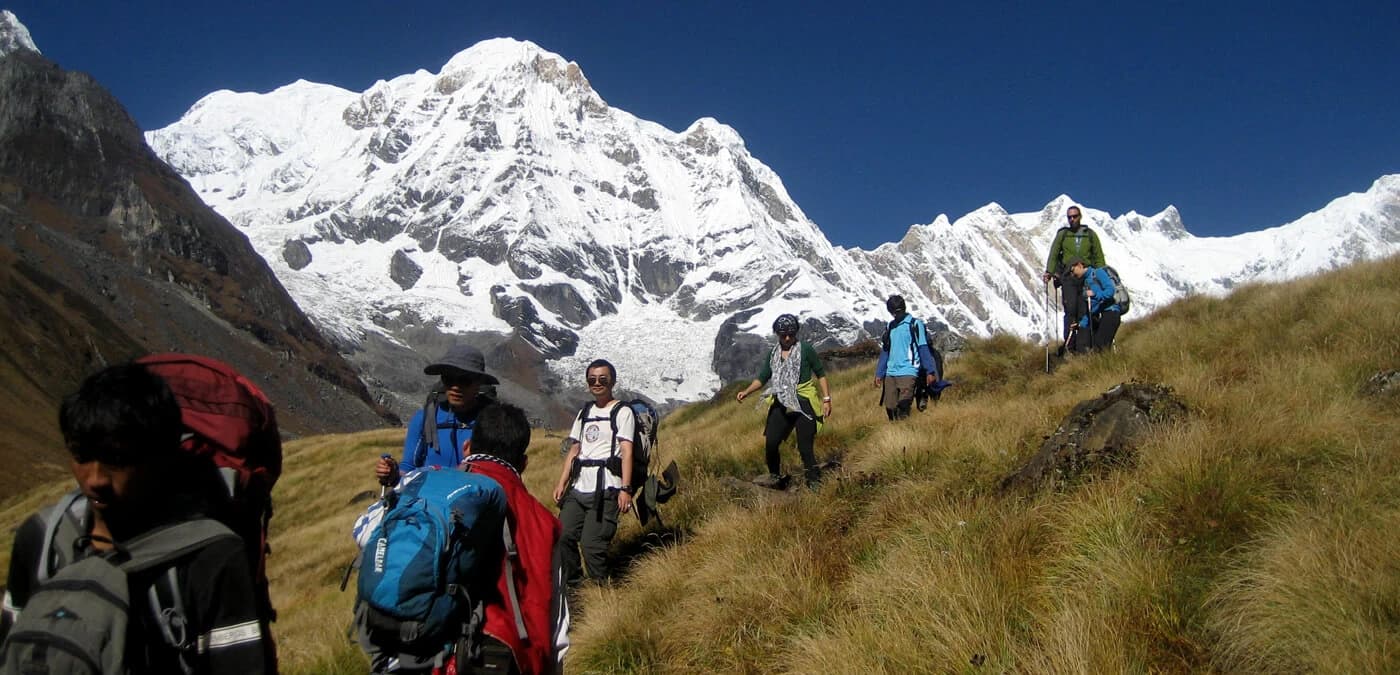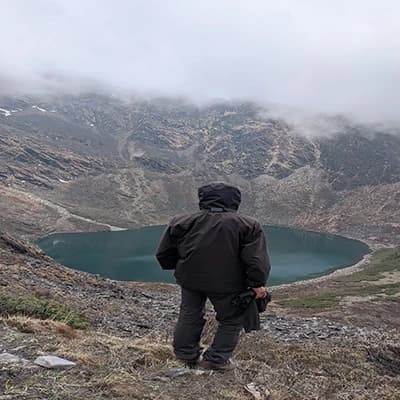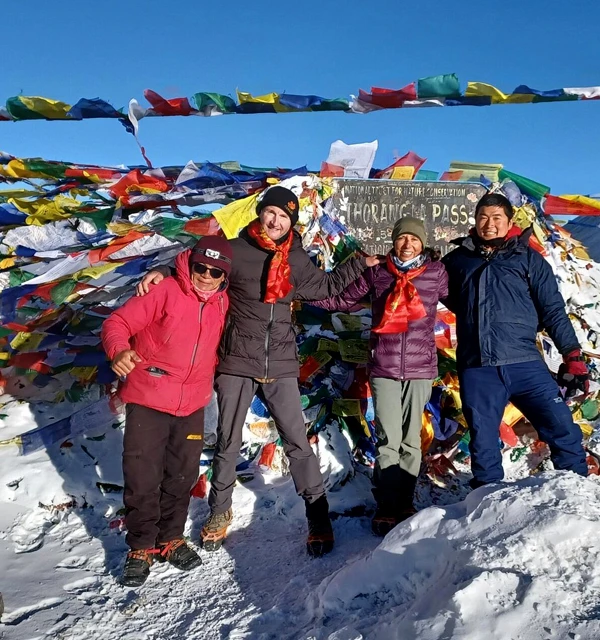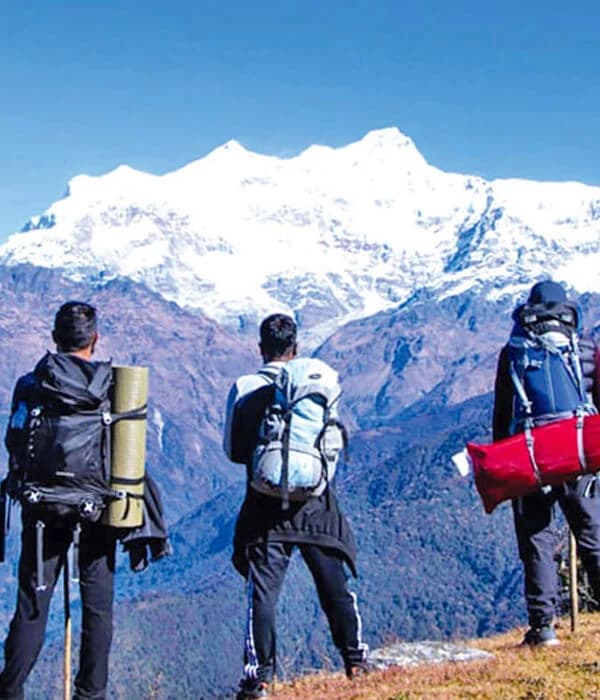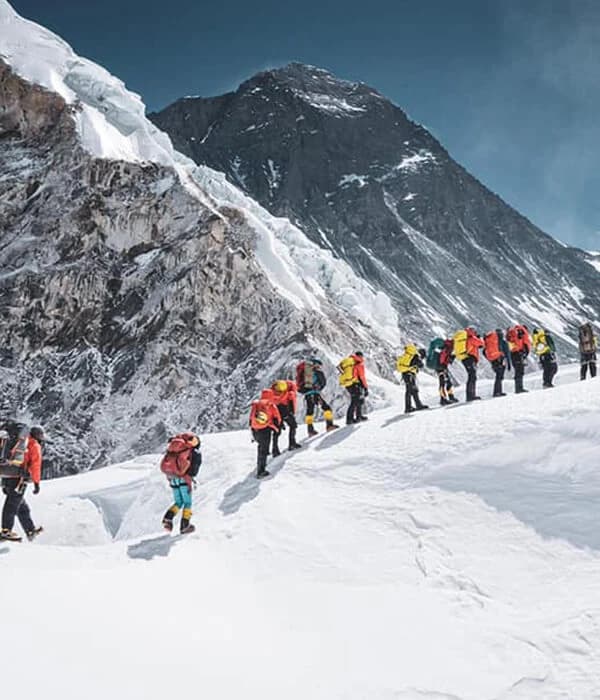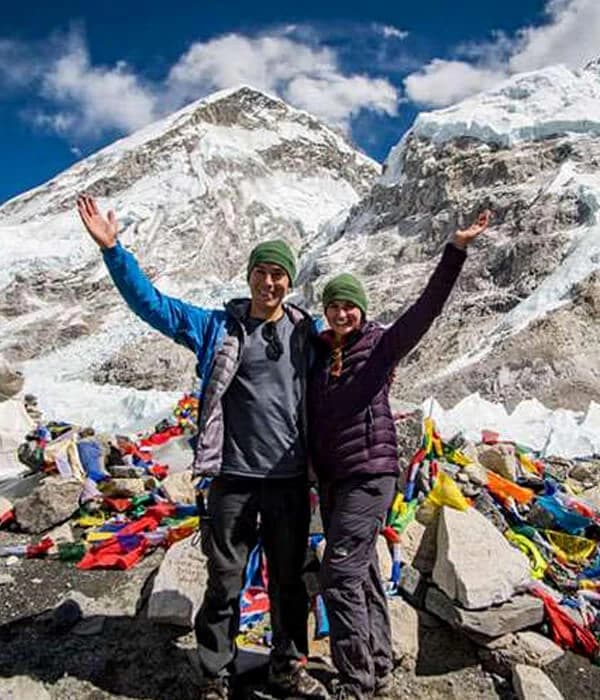Trekking in Nepal Reopens: Adventure Awaits After Gen-Z Protests
Nepal travel update post Gen Z protest 2025
On September 8th, right before Nepal’s peak season of trekking and tourism. Nepal witnessed a nationwide protest by youths aged from early teenagers to early adulthood, also known as Gen-Z, which later escalated into a violent protest and clash between the government and the public. After the ongoing protest in Indonesia against the ignorance of public welfare, a video showcasing the luxury of politicians' children was shown, which later turned into the Nepo kid trend. This trend later reached global users, including Nepalese, and started a spark. Many users posted such videos showing the extravagant, lavish lifestyle of corrupt politicians' children, which brought rage among youths.
Many of the users planned to do a peaceful protest in Maitighar, which was not an organized plan but rather a discussion on comments. Later, on September 4th, the Nepalese government initiated a ban on major social media platforms of global techs like META and GOOGLE for not complying with the Social Media Regulation Act 2080. Former communication and IT minister Prithivi Subba Gurung gave an order to ban more than20 social media platforms, including Facebook, YouTube, Instagram, Snapchat, and many more, for not complying with the government. The then-communication and IT minister Prithivi Subba Gurung stated that such a global tech giant needed to register under government surveillance and pay proper taxes. META and GOOGLE were already registered under the Digital Service Tax via the Financial Act 2079/80 and paying a huge amount of tax.
But META stated not to register under the SocialMedia Regulation Act 2079/80, as the content was conflicting and was not meeting their global standard, and was violating their user privacy agreements. After the end of the deadline, a ban was initiated, which brought public outrage, and many youth took their rage to the streets. As TikTok was already registered, the youths planned on taking it to the streets with no individual organizing the protest. On September 8th, from early morning, 9:00 AM, youths started gathering in front of Parliament in New Baneshwor. Many other people started gathering for a protest not only in Kathmandu but also in other cities outside of the Valley. As the number kept growing to hundreds of youths, some protestors mentioned that a few people were possibly government-hired goons among the protestors, who later went to the front and tried to break the safety zone and head towards parliament. When the tension grew, Kathmandu’s Chief District Officergave an order to use tear gas to control the crowd that was trying to infiltrate parliament. This order of CDO grew even more outraged, and the public started throwing rocks at the APF(Armed Police Force) of Nepal..
Later orders to use rubber bullets below the knee were issued to disperse and control the crowd, but multiple reports stated the use of live ammunition, and most of the shots were above the knee, on the chest, and on the head. In the evening, the crowd grew thinner, but police brutality went on, and the number of dead kept rising as time went by. Reports even stated that the riot police were infiltrating hospitals to arrest protestors and possibly injuring already injured patients, and throwing tear gas inside hospital premises near the emergency ward. Even during nighttime, multiple pieces of footage showed the brutality of the police who went to arrest dispersed protestors inside the residence as well.
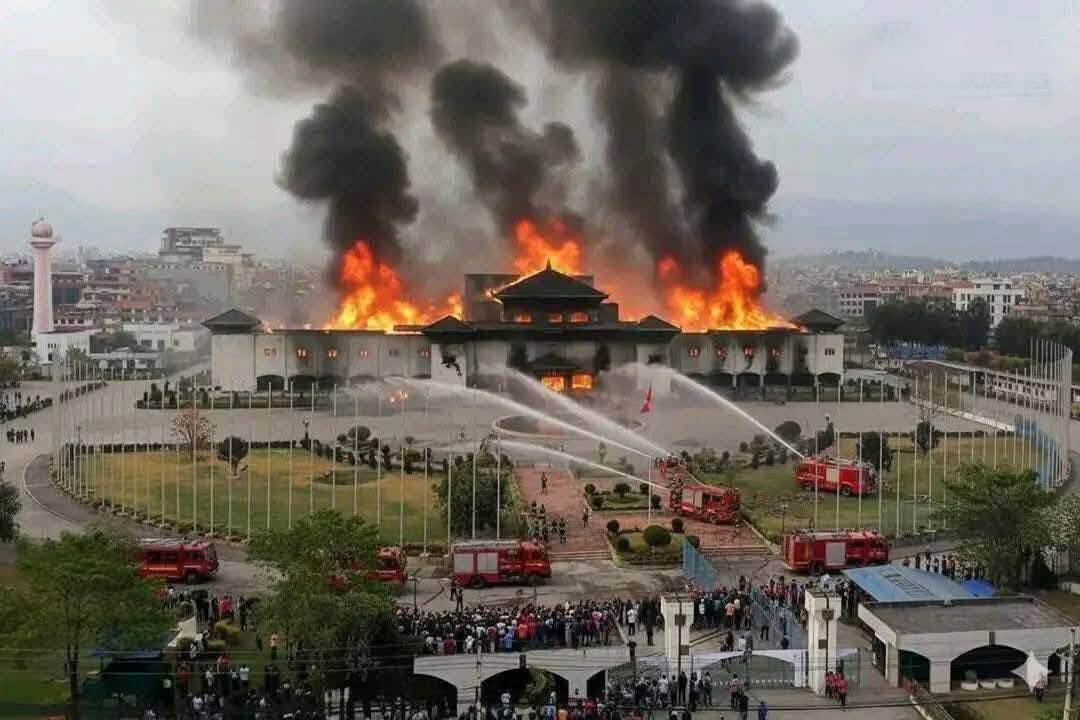
Photo courtesy: Makalu Khabar
The revolutionary day
On September 9th, a curfew was initiated inside the ring road and near government offices under the governance of former Prime Minister KP Oli. But the brutality and death of teenagers and students brought not only the youth but also the parents and every citizen on the street. By 7:00 AM, a few protestors gathered in front of Parliament again despite the curfew; by daytime, many protestors gathered in front of the private residences of government officials and ministers. The rampant corruptionof government officials, negligence of the citizens, and failure to fulfill the needs of the people over the decade after the fall of the monarchy brought unexplainable rage, and a ban on social media and the death of children became the trigger for revolution on September 9th. The rage led to the destruction of the residences of ministers, police stations, vehicles, parliament, and other government offices.
By evening, former PM KP Oli gave his resignation, but the public rage couldn’t be contained or checked, as no individual was leading this mass protest. Government security went into hiding as the public was tearing down the police station as well; with no police to regulate, prisoners broke out of prisons, and private businesses were vandalized and looted. After 10:00 PM, the Nepal Army initiated taking control of the situation and issued a curfew past 10:00 PM. The Nepal army immediately took control of the situation and arrested the prisoners and protestors who vandalized the private residence and businesses. For 2 days, the Nepal Army took control of the situation, and on September 12, with a meeting between the former chief justice minister Sushila Karki and Sudan Gurung, the leader of the NGO organization named Hami Nepal, and a discussion on Discord with Nepali youths, Sushila Karki was appointed as the prime minister of Nepal until the formation of the new government. After the appointment of ministers, Kathmandu again opened to daily activities, and footage also showed people cleaning the mess in public areas around them after the Nepal army took control.
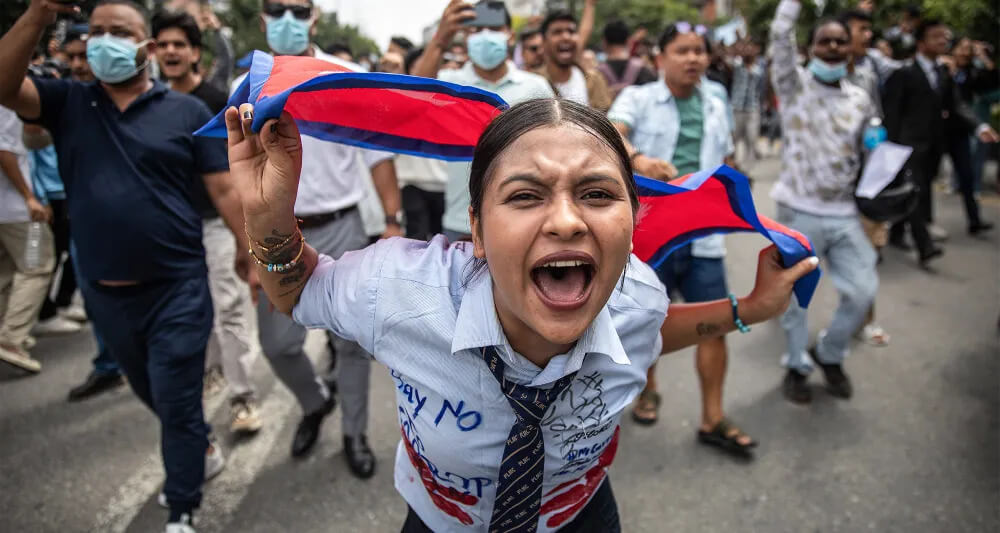
Photo courtesy: Social Media
Continuation of Tourism in Nepal.
This unexpected series of events right before Nepal’s peak season of trekking, when Kathmandu becomes a hub for foreigners who are here for trekking, touring, and other travel adventure activities, brought tension for both travelers and tour operators. The protest resulted in burned government offices and martial law all over the country, which halted tourism for a brief time. As the tour agencies of Nepal need legal documents and permits to organize every trek and tour, the protest and martial law became an important issue for operating agencies. Due to questions regarding the formation of the government without any issue and with no fixed time for knowing when the country will gain stability, tourism, one of the major sources of income of Nepal, nearly came to a complete stop. But within a week, including the time of protest and violence, Nepal formed an interim government, and the army brought stability to the country, and daily commutes and activities reopened. With this, trekking in Nepal is now open more than ever, and doing every trail is possible with personal safety care and past required permits.
To every solo and group traveler who wants to visit Nepal in September and October 2025, you are more than welcome to travel!. Grab your passport, book your trip, take your flight, and hike with Wilderness Excursion PVT. LTD is also open to pre-booking and immediate departures.
Essential Tips for a Safe and Memorable Trip to Nepal – Advised by Wilderness Excursion
While Nepal remains a safe and welcoming destination, a little preparation ensures your adventure is both incredible and secure. Follow these key guidelines to make the most of your journey to the Himalayas.
1. Choose Your Support Wisely
- Book with a Reputable Agency: Always arrange your trek through a government-registered and well-reviewed trekking company.
- Insist on Qualified Staff: Ensure your agency provides an experienced, licensed guide and a porter. Their expertise is invaluable for safety and navigation.
2. Prepare Before You Go
- Secure Comprehensive Travel Insurance: Your policy must cover high-altitude trekking, emergency helicopter evacuation, and medical expenses.
- Train and Acclimatize: Begin physical training at least one month in advance. Understand the importance of acclimatization days during your trek to prevent altitude sickness.
3. Stay Informed During Your Trip
- Monitor Weather Conditions: Stay updated on weather forecasts and be aware of potential hazards like landslides or trail closures, especially during the monsoon and winter seasons.
- Confirm Travel Logistics: Keep track of your flight schedules and any national updates by following trustworthy local news sources.
4. Respect Local Culture
- Embrace Local Customs: Observe and respectfully follow local traditions. A positive and open attitude towards cultural differences will greatly enrich your experience.
- By planning ahead and traveling responsibly, you ensure your adventure in Nepal is not only safe but truly unforgettable.
Nepal's top five treks for 2025, after easing the chaos, include the iconic Everest Base Camp Trek, the diverse Annapurna Circuit, the challenging yet rewarding Manaslu Circuit Trek, the shorter and accessible Mardi Himal Trek, Ghorepani Poon Hill Trek, and the beautiful Langtang Valley Trek.
For Instant Booking Query:
WhatsApp: +977 9851042153 / +977 9765303766
Email:info@wildernessexcursion.com
